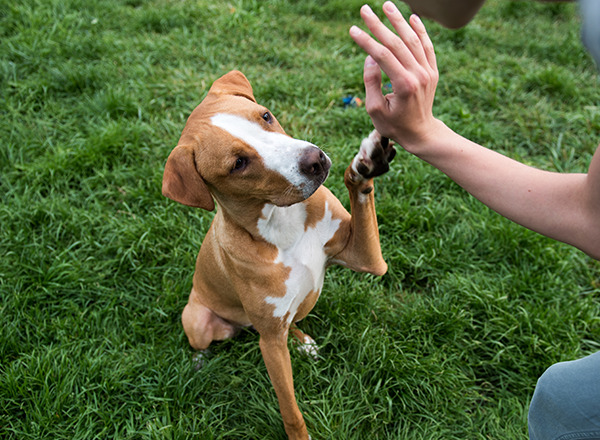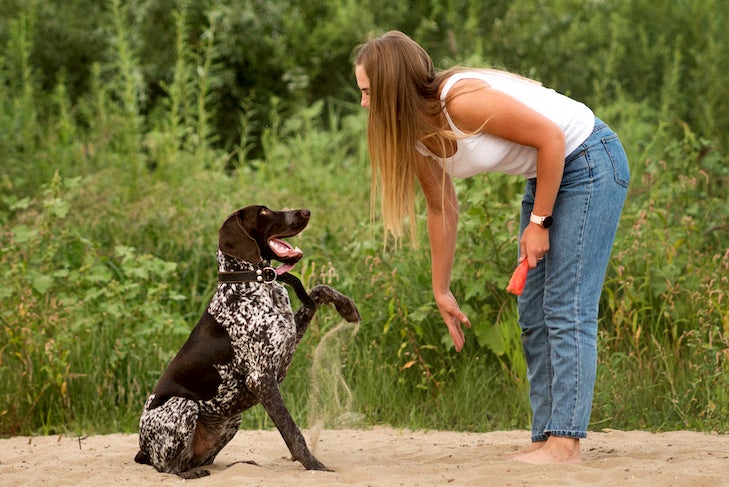Leading Canine Educating Tips for a Well-Behaved Buddy
Training your pet dog to be a well-behaved buddy calls for a nuanced understanding of canine habits and the implementation of efficient strategies. The trip to a courteous pet entails more than just these fundamentals; it requires a deeper exploration of methods that can transform your training technique.
Recognizing Dog Behavior
Understanding canine behavior is vital for effective pet dog training and fostering a harmonious partnership in between pet dogs and their proprietors. Pet dogs are complicated animals, displaying a vast array of behaviors affected by genes, environment, and socialization. Recognizing the underlying motivations for a dog's activities-- such as worry, excitement, or territorial impulses-- can significantly boost training effectiveness.
Observing body language is a crucial aspect of comprehending canine behavior. Tail setting, ear positioning, and posture can supply valuable insights right into a dog's mood. For instance, a wagging tail does not always suggest happiness; it can additionally represent frustration or anxiety. Moreover, social communications with various other pets and humans play a crucial function in forming actions. Pet dogs that experience positive socializing are usually a lot more versatile and courteous.

Essential Educating Commands
Understanding important training commands is crucial for establishing effective interaction in between canines and their proprietors. These commands work as the foundation for a mannerly dog and can substantially improve the total partnership between family pet and proprietor.
"Keep" strengthens a dog's ability to continue to be in one setting, promoting self-constraint. "Down" instructs your pet to lie down, which can help in handling ecstatic habits. "Heel" shows your pet to stroll along with you, cultivating better chain good manners.
Practicing these commands in numerous environments assists pets generalise their training and respond appropriately, no matter of distractions. By spending time in showing these important commands, proprietors can cultivate an unified and considerate relationship with their canine buddies, boosting both safety and security and enjoyment in everyday communications.
Favorable Reinforcement Strategies
Favorable support techniques are crucial approaches in pet training that concentrate on fulfilling desired behaviors to urge their reappearance. This approach leverages the all-natural knowing processes of pets, allowing them to associate specific activities with positive results. By using deals with, appreciation, or play as incentives, fitness instructors can properly motivate dogs to repeat the habits they desire to enhance.
To apply positive support, it is vital to deliver incentives right away after the preferred behavior happens. This aids the pet make a clear link in between their activity and the reward. Consistency is also important; incentives ought to be provided every time the desired habits is exhibited throughout the first training phase, gradually transitioning to a variable schedule as the behavior comes to be read what he said much more reliable.
Additionally, picking the ideal kind of incentive is important. While treats are usually reliable, some pet dogs may react better to verbal appreciation or interactive play. Recognizing your dog's preferences can enhance the training experience. Inevitably, favorable support fosters a trusting relationship between the pet and owner, making training a more delightful and reliable procedure that constructs a well-behaved buddy.

Socialization Techniques
Efficient socializing strategies are important for a dog's advancement, as they help develop a well-rounded and confident companion. Very early direct exposure to different settings, individuals, and other pets is important to prevent behavior problems in the adult years. Begin this process during the essential socialization duration, which generally occurs between three and fourteen weeks old.
Present your puppy to varied stimulations, such as different surface areas, appears, and smells. Controlled experiences with other pet dogs and friendly people can promote positive associations. Pup classes are a superb source, offering structured settings for social interaction and discovering basic commands.
Gradually enhance the complexity of socializing experiences. Take your pet dog to parks, pet-friendly stores, and public events, making certain each experience declares. Observe your canine's responses and eliminate company website them from overwhelming scenarios to avoid fear-based actions.
Utilize favorable support to compensate calm and certain habits during social interactions. Bear in mind, persistence is essential; each canine has its own pace for changing to brand-new experiences.
Uniformity and Routine
Developing uniformity and routine in pet dog training is necessary for promoting a complacency and understanding in your pet dog. Pets thrive on predictability; understanding what to anticipate helps them really feel secure and minimizes anxiousness. When training, it is vital to use the exact same commands, gestures, and rewards constantly. This harmony help in reinforcing wanted behaviors and assists your pet dog promptly associate details actions with particular outcomes.
Integrating an organized regimen right into your training sessions also enhances your canine's understanding experience - Dog training near me. Arrange everyday training sessions at the same time daily, ensuring that both you and your dog are description emotionally ready. Short, regular training sessions are much more efficient than long, irregular ones; go for 5 to 10 mins of concentrated training numerous times a day
Integrate training right into daily activities-- compensate your canine for sitting before meals or strolling steadly on a leash. In general, a consistent approach, coupled with a structured regimen, lays the structure for a well-behaved buddy, promoting a harmonious relationship between you and your pet.
Final Thought
Favorable reinforcement methods offer to encourage wanted behaviors, while early socializing prepares pet dogs for diverse settings. By emphasizing these key elements, the bond between owner and pet dog enhances, ultimately leading to an unified and fulfilling partnership.